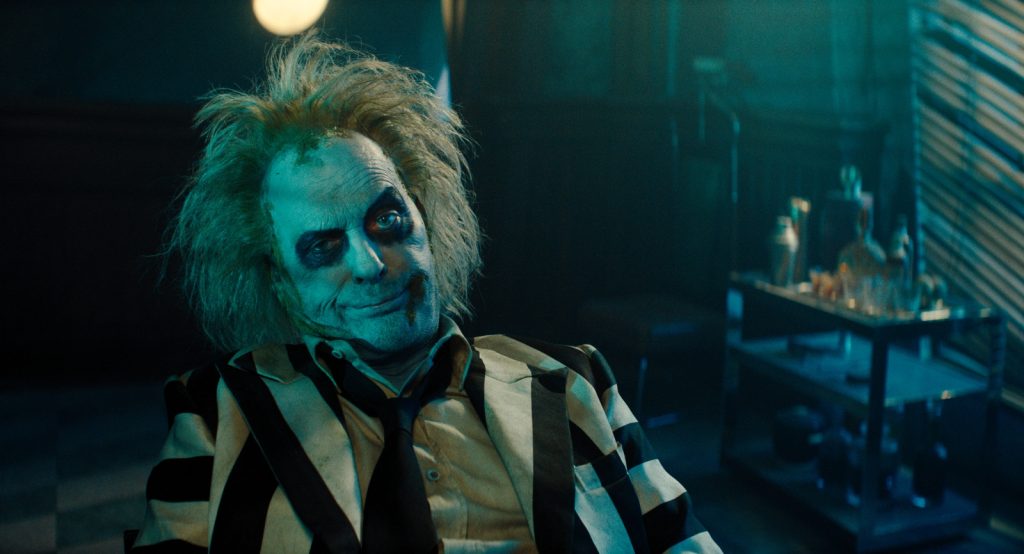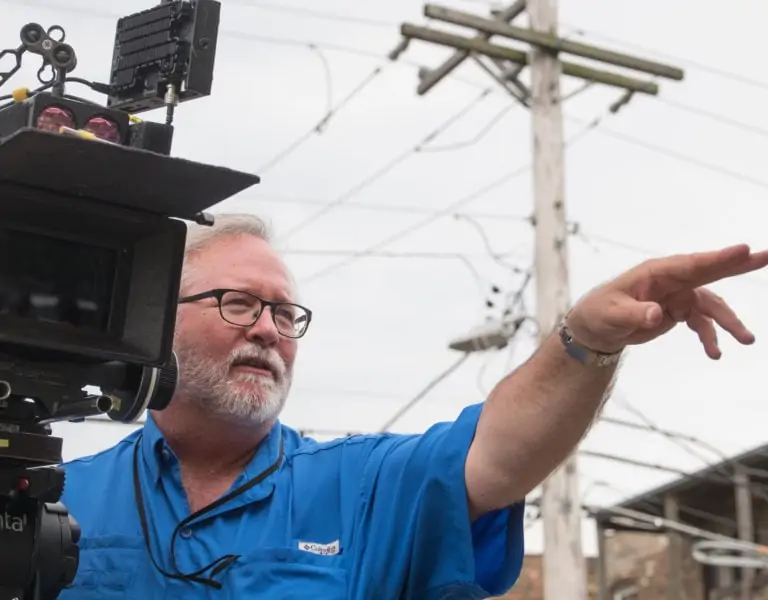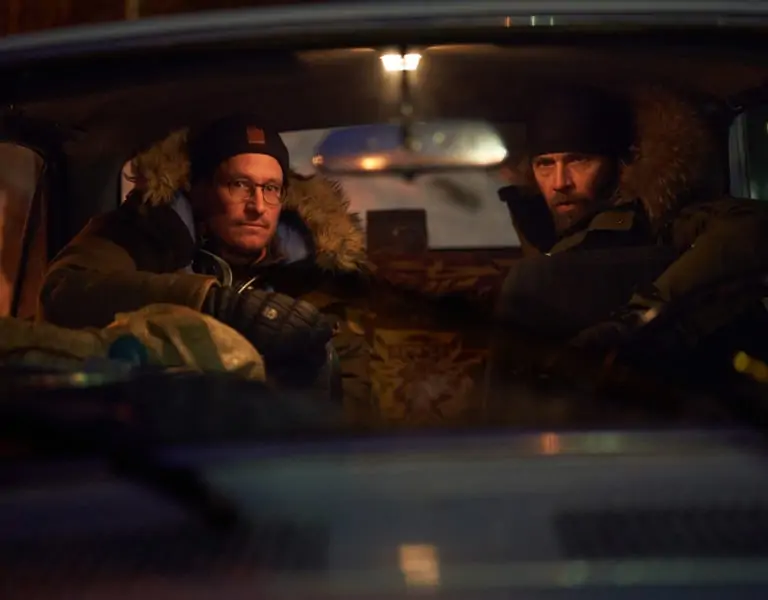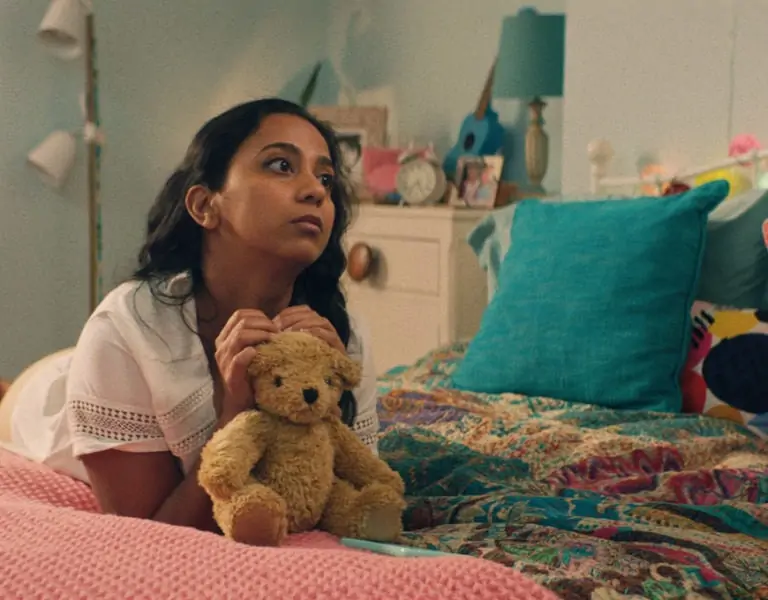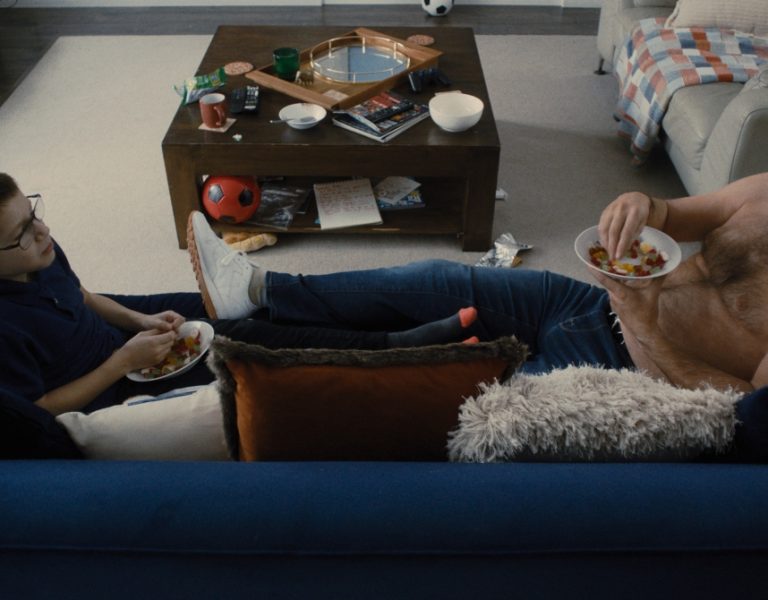DON’T BE AFRAID OF THE DARK
Long shadows to cast, surreal hallucinations to simulate, blood-curdling scares to stage… For DPs fluent in darkness and light, horror is the ultimate catalyst for creativity.
“Two of the hardest genres to get right, photographically, are comedy and horror, because they both rely on punchlines,” says Sam McCurdy ASC BSC. “You have to deliver that punchline, to shock and scare the audience — or to make them laugh. With horror in particular, you need to find new ways to make an audience not quite sure what they’re seeing.”
20 years ago, McCurdy shot claustrophobic horror feature The Descent about six women who encounter monstrous cannibals inside an uncharted cave system, for director Neil Marshall. To convincingly establish the subterranean setting (filmed in sets built at Pinewood Studios, near London), he limited the lighting to sources the characters brought underground with them, from flashlight beams to flares.
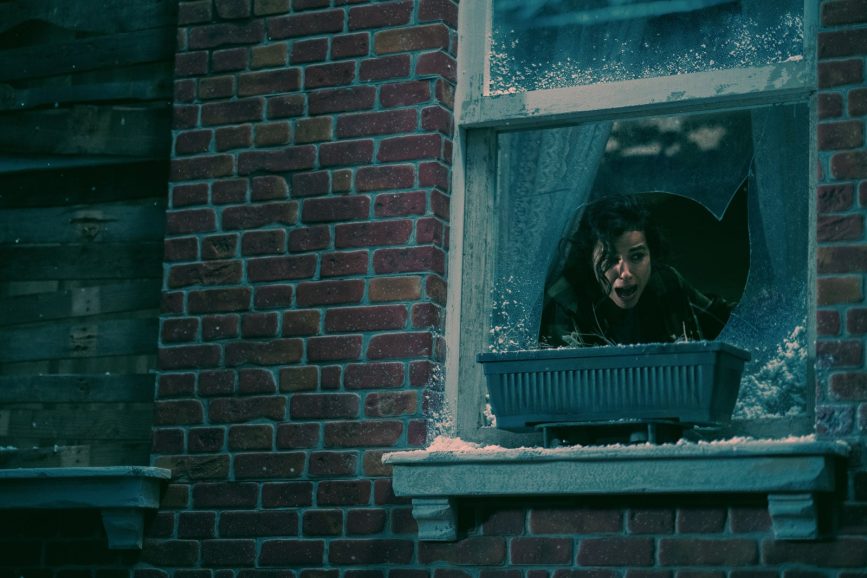
Inspired by atmospheric 1970s horror, particularly John Carpenter’s Halloween, McCurdy shot The Descent in a widescreen format, opting for Super 35mm 2.35:1. Given lowlight conditions on set, he chose Fuji Eterna stocks. “We wanted to see nothing in the shadows,” McCurdy says. “We found deep, rich, inky darkness with the Fuji stock.”
As humanoid “crawlers” hunt the characters underground, keeping The Descent on the edge of darkness was crucial. “We were constantly testing to find the balances of fill light and front light for the creatures, without it feeling like they’re jumping off the screen,” he says. “They could hide in every shadow; and, even if they were lit, they had to blend into the cave system.”
For McCurdy, then early in his career, The Descent required non-stop creative problem-solving, from testing torches with different fuels and matching supplemental lamps to sources via filter packs to placing 12-volt motorcycle batteries and dimmer packs in the actresses’ backpacks so they could adjust their flashlight levels from scene to scene.
“With the greatest respect to all of us, The Descent came out of naive filmmaking,” he recalls, citing as an influence Sam Raimi’s guerilla shooting style on The Evil Dead, during which he nailed a camera to a plank of wood and tore through the forest at high speed. “We didn’t have 50-foot Technocranes we could jam into the cave system; we screw-gunned a 35mm camera with a 400-foot mag onto a piece of wood and pushed it on set. The grips and I would pull it out as the girls were crawling through. It was very rudimental, but it worked, because it felt organic.”
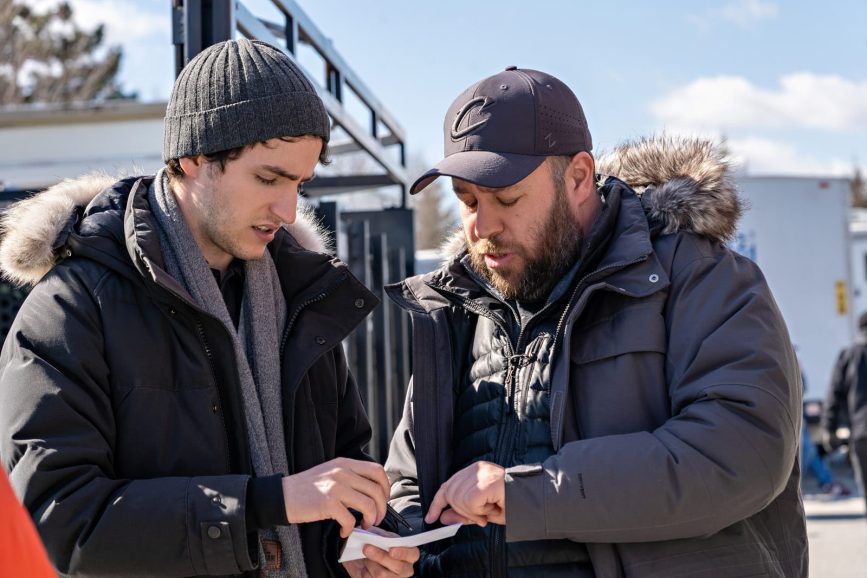
Darkness and shadow
“All of my initial conversations are about mood,” says Stephen Murphy BSC ISC: “Are we shooting night or day? Are we shooting in white-walled locations? Will that work against the mood we’re after? Will it subvert expectations and work in our favour? What appetite for darkness and shadow does the director and studio have? How afraid of the dark are they?”
No One Gets Out Alive, directed by Santiago Menghini, is set inside an Ohio boarding house where a tenant uncovers a terrifying secret. To create an atmospheric central location, Murphy collaborated with production designer Chris Richmond; shooting plates in Cleveland, doing a partial exterior ground floor build on set in Romania, and completing its exterior with CGI set extensions so they wouldn’t be limited by the space of any pre-existing interiors, the two undertook camera tests to evaluate textures, colours, and other details like light fittings.
Interior setups were deliberately underexposed two and a half to three stops, with Murphy and Richmond adding light to background walls to illuminate actors standing in frame. “We tested dozens of colour wallpapers and paints, combined with costumes and practical lights,” Murphy says. “I was using a custom LUT designed to emulate a partial bleach bypass, which would desaturate and cool most colours, so I combined that with a warmer gel pack on the lights I was using to get a nice mixture of cooler blue greens with warmer skin tones.”
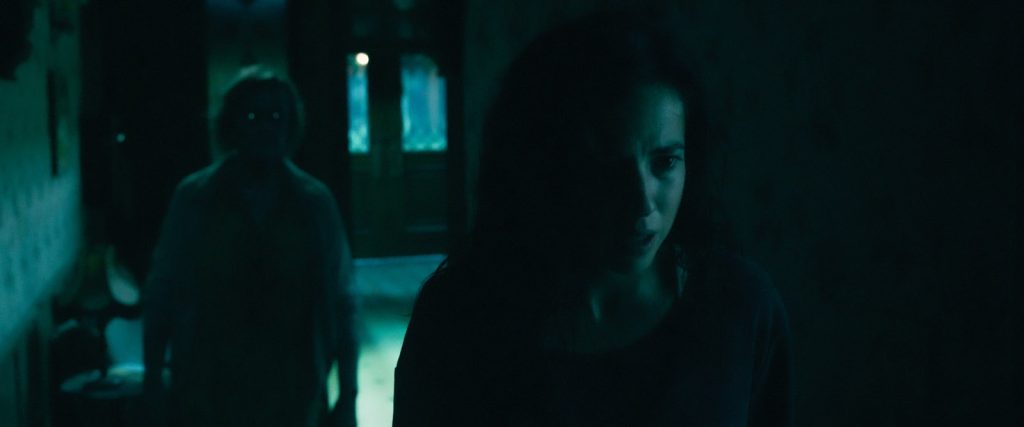
Murphy used the Sony Venice exclusively in its High Base ISO 2500 mode and always at 3200K, pairing it with Leica Thalia Fujinon 28-100mm and 80-250mm Premista zooms, with Leica M0.8 and Panavision Primo 70 in select instances, to replicate the contrast of reference stills he’d shot on a Leica camera at extremely low-light levels. “I’m less interested in the differences in modern digital cameras and more interested in the choice of glass and physical size of the camera,” he explains. The Lecia Thalia primes he chose for most of the film “were vintage glass, but with excellent pedigree”.
Much of the visual style “was about embracing extreme levels of darkness. The director wanted the audience to have to lean into the shadows to see something. We hid ghosts on the edge of visibility in several shots. We used darkness to literally shape the story, only revealing the bare minimum of visual information. It was technically quite difficult to work on that edge of gross underexposure for so long”.
In-camera effects
“Horror can have any look; it can be bright, dark, extremely saturated in colour, or with no colour at all,” says Karim Hussain CSC. “That’s what’s beautiful about this genre. It can be anything.”
Antiviral, Possessor, and Infinity Pool, all sci-fi horror features for director Brandon Cronenberg, reflect a visual language rooted in trial and error; using a screen and projector in Hussain’s living room, the pair built up a library of camera effects, creating practical projection vortexes and experimenting with gels and liquids to achieve hallucinatory bursts of colour.
“For Infinity Pool, every effect is in-camera,” says Hussain. “All the gore, hallucinations, strange opticals are done live, sometimes projecting the rushes in my living room then rephotographing them with Brandon, as we add strange live layers on top, such as light through dichroic film and filming through a handheld split-field diopter in front of a long lens to give the illusion of images snapping into then out of focus in an odd, organic motion.”
For Infinity Pool, Hussain shot on the ARRI Alexa Mini with Canon K35 lenses and his prized possession: a 1970s Angénieux 25-250 zoom lens, nicknamed “Lucky Pierre,” bought on eBay. Upon discovering it had fungus growing in its rear element, Hussain was astounded by the natural diffusion and bokeh effects this created; used extensively for Possessor, the lenses had a chromatic aberration and gave Infinity Pool a softer, more muted look that later mutated into vivid smears of colour and light.
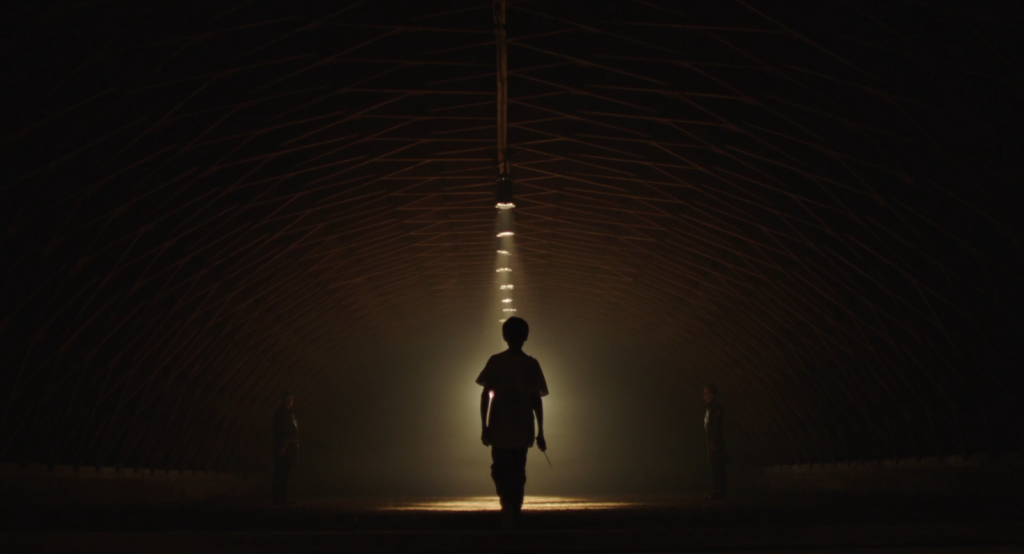
Orphan: First Kill, about an Estonian mental patient with dwarfism who poses as the missing daughter of an American family, required makeup and forced perspective shots to convincingly recast 23-year-old actress Isabelle Fuhrman in the role she’d originated 13 years prior. “I was handed a unique challenge that was quite surreal in its conception: make a 23-year-old woman look like an 11-year-old who’s actually in her thirties,” Hussain recalls. To achieve this in-camera, “the sets surrounding her all had to be built over-sized and the cast surrounding her had to wear massive platform shoes”.
Shot digitally at 4.5K resolution, using the ARRI Alexa Mini LF with Canon K35s and Lucky Pierre (with an expander to cover the larger sensor used for extremely shallow depth of field), Hussain relied heavily on Tiffen White ProMist and DDFX filters for massive diffusion. “It’s probably the most diffused movie since the ’70s. We undoubtedly went too far, but at the time it was necessary to pass the illusion. We couldn’t diffuse Isabelle’s shots only; it would be too distracting, so the whole movie had to look that way. In consequence, the image texture became ironic, like an ultra-diffused ’70s TV movie melodrama gone haywire.”
Working in the horror genre connotes “a sense of freedom”, Hussain says. “As long as it’s appropriate to the conceived mise-en-scène with the director, you can do anything… The definition of horror isn’t just dark sets and movies that frighten you with jump-scares. Some of the best horror films, in my opinion, don’t even have jump-scares, but a sense of dread and psychological darkness—not necessarily physical darkness.”
For Benjamin Kračun BSC, shooting body horror The Substance for director Coralie Fargeat meant embracing a hyper-stylised, “pink-noir” fantasy of Los Angeles where an ageing actress could slowly decay after injecting an experimental serum. “Coralie wanted beauty, seduction, and bubble gum colour,” Kračun says. “I put on a pink-swirl filter, and used a confetti filter sparingly. I don’t know if anyone’s used thm; they’re at the back of the filter-box at the camera house.”
Kračun used a wide range of setups but primarily opted for the Alexa Mini LF with Canon K35s that allowed for “warm flares and soft skin,” shooting spherically to accommodate Fargeat’s preference for extreme close-up. With Leitz Thalia prime lenses—at 24mm, 55mm, and 120mm—he could focus “so close, almost to the glass,” which suited a film “about beauty and looking at yourself”.
The Substance “goes full-on, blood-guts-and-gore extravaganza”, which posed another challenge: “I needed splash bags on cameras, because they would all get completely covered in blood. To prepare for that amount of blood and what was happening with camera and lighting was the biggest challenge. All lights had to be waterproof.”
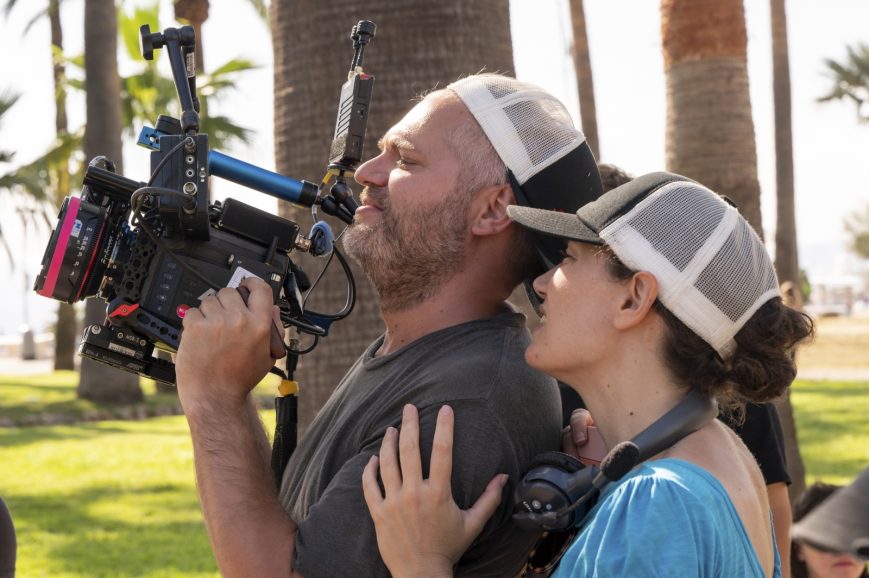
Flickers of the supernatural
Otherworldly ambience communicates a sense of psychic fracture in both A Haunting in Venice and Beetlejuice Beetlejuice, the two most recent horror features for Haris Zambarloukos BSC GSC. “Every story has a point of view, I believe, a way of being told and a place where you would like to put the audience to reveal the subtleties of the story—and of the human condition,” he says.
For Kenneth Branagh’s A Haunting in Venice, as Belgian master detective Hercule Poirot is thrust into a murder investigation after attending a séance at a decaying palazzo, lighting the city’s maze of canals and catacombs was a particular challenge. “Venice is a city of terracotta and umber, of nuanced brown-red earth-tones, oranges, and yellows,” he says. “It feels bloody, and we mixed that with bluish moonlight, with candlelight.”
To keep the audience on edge, Zambarloukos emphasised “subtle movement and shifts in intensity in every frame”, whether through small tungsten and LED fixtures or the actual flames utilised to augment candlelight. “Whether it was a more staccato pulse or a slower one, there’s always a flicker,” he says.
Marking Tim Burton’s return to the macabre world of his 1988 comedy-horror classic, Beetlejuice Beetlejuice similarly required “subtle strobing to put the audience on the edge of their seats”, says Zambarloukos. As mischievous ghosts wreak havoc in the afterlife and the world of living, he sought to express the uneasy, liminal coexistence of both realms through a colour palette gradually shifting from blue to cyan to deeper green.
Shooting in low-light while making extensive use of negative space across both productions, Zambarloukos chose the same camera—the Sony Venice 2—on both A Haunting in Venice and Beetlejuice Beetlejuice. “It’s the best contemporary camera in terms of low-light levels, with 3200 ASA sensitivity, for candlelit work as well as nuances of colour,” he says, noting the “fantastic colour space you can create, from the coolest colours to the warmest reds”.
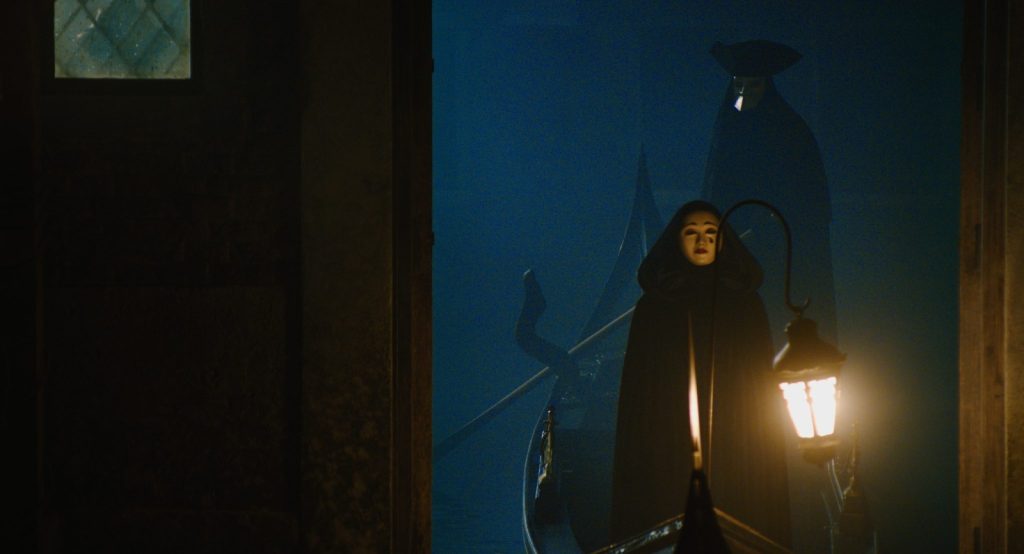
Zambarloukos opted for similar lenses on both productions, pairing the Sony Venice 2 with original Auto and Panavision Ultra Panatars, shot at 3200 at a T4 in 1.85 aspect ratios; originally created for Ben-Hur, these vintage lenses had a 1.25 anamorphic squeeze and could convert 65mm to a 2.67 aspect ratio, without much cropping required. For Beetlejuice Beetlejuice, Zambarloukos also employed “thoroughly modern” Ultra Panatar II lenses for an enhanced anamorphic look, bringing these together with a set of the older lenses. “We definitely felt we were working with the crown jewels of Panavision,” he says. “We treated them with respect and care.”
Beetlejuice Beetlejuice also involved shooting as much as possible in camera, without relying on VFX. “It’s a very personal, psychological story about growing up, family ties, and how you deal with your inner thoughts, feelings, and surroundings – but it’s set in such a fantastic world, with so much intense imagination,” says Zambarloukos. Channelling the eccentric, whimsically gothic atmosphere of his original, Burton also sought a similar scale and scope of effects, from prosthetic makeup and puppetry to stop-motion, claymation, and replacement animation.
“In every shot he sets up, the performances are from everyone,” Zambarloukos says. “You could have a puppet with a head that has animatronics, requiring three people on remote control—one for each eye, one for the mouth. It takes so many kinds of performers and live special effects to pull off even the simplest, smallest shot. That spontaneity and level of performance—from actors, puppeteers, animatronics, hair and makeup, camera and lighting, and the grip team—meant we all worked in unison to a level I’ve never experienced before.”
